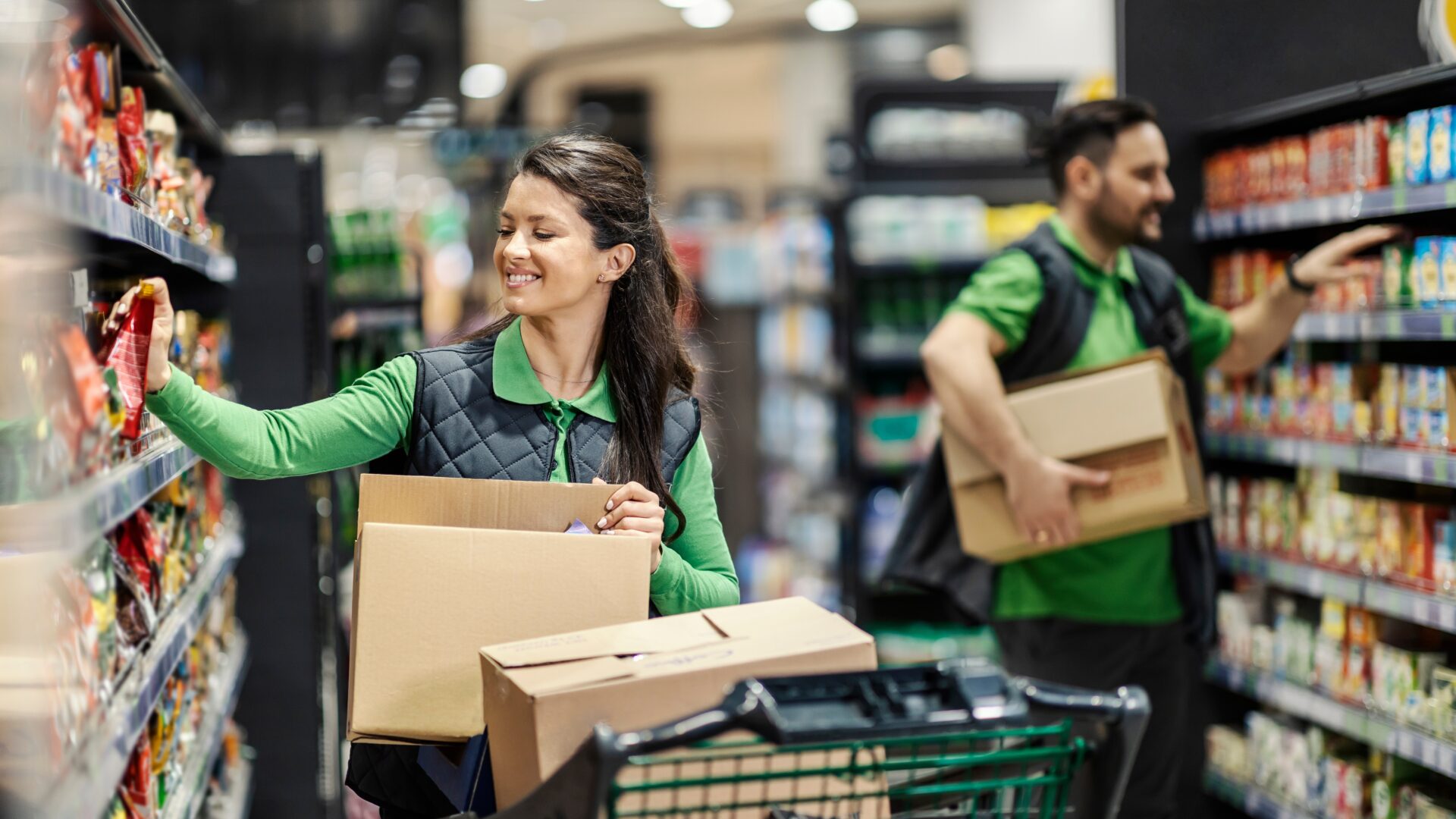Change is good—so long as you can keep up with it. Retail merchandising software can help stores do just that. The transformative tool is designed to optimize product display, manage inventory efficiently, and enhance overall customer experience. In this blog post, we delve into the transformative potential of retail merchandising software, exploring its pivotal role in redefining merchandising strategies and driving revenue growth for retail businesses. So if you’ve been wondering whether retail merchandising software can help increase sales, we’re here to tell you the answer is yes, absolutely.
What is Retail Merchandising?
Retail merchandising is the art and science of presenting products in a retail store in a way that entices customers to make a purchase. This includes both in-store merchandising and digital strategies including product selection, display design, shelf stocking, and pricing, all orchestrated to maximize sales and create customer loyalty. Effective retail merchandising requires understanding customer behavior and preferences and leveraging that knowledge to create an inviting and efficient shopping environment.
Among the most common types of retail merchandise planning:
Visual merchandising, the aesthetic presentation of products, using elements such as lighting, color schemes, and layouts to create visually appealing displays.
Planogram merchandising, the strategic placement of products on shelves and in stores based on a detailed planogram to maximize sales and improve customer satisfaction.
Cross-category merchandising, which combines complementary products from different categories to encourage customers to make additional purchases.
Omnichannel merchandising, which integrates merchandising strategies across various channels (in-store, ecommerce, etc.) to provide a comprehensive, cohesive shopping experience.
Point-of-sale (POS) merchandising, which optimizes displays and promotions at the checkout area or other high-traffic locations to encourage impulse purchases.
The Link Between Merchandising Planning and Revenue
Effective merchandising strategies draw customers into the store and guide their journey through it, directly influencing purchasing decisions. For instance, a well-merchandised store with clear signage and thoughtfully grouped product categories makes it easier for customers to find what they’re looking for, enhancing their satisfaction and likelihood of purchasing. Effective merchandising can also maximize exposure to high-margin items and promotions, increasing the chances of impulse buys and upsell opportunities.
In short, retail merchandising can serve as a silent salesperson, subtly guiding customer behavior. However, while traditional retail merchandising strategies have proven effective over time, the tactics to support them have notable limitations. In addition to being time- and resource-intensive, practices such as manually rearranging shelves to test new planograms or repositioning displays take time and often incur labor and material costs. Plus, they cannot typically offer personalized experiences to customers, a key component in today’s consumer market.
Enter Retail Merchandising Software
Retail merchandising software integrates various operational tasks, from inventory management to sales tracking, to streamline the execution of merchandising strategies and transform retail management, making it more responsive and adaptable to changing market conditions.
Advanced inventory management is a key feature of many retail merchandising software solutions. This ensures that optimal stock levels are maintained, striking the right balance between demand and supply. It minimizes the likelihood of both overstocking, which can tie up capital unnecessarily, and stock shortages, which can lead to missed sales opportunities.
Sales tracking is another critical function. By providing real-time data on sales performance and a comprehensive analysis of which products are selling well and which are not, retailers can adjust their merchandising strategies accordingly.
The evolution of merchandising software reflects the broader trends in retail operations and store management. Initially, these software solutions focused on basic operational functionalities. However, as the retail landscape has become more complex and competitive, the software has evolved to become more comprehensive and configurable. This adaptability allows retailers to tailor the software to their specific needs, whether it’s for a small boutique or a large chain of stores.
The seamless integration of software solutions with modern retail practices has been instrumental in driving efficiency, improving customer experiences, and ultimately contributing to the overall success of retail businesses. No longer a mere tool, merchandising software is now a critical component of effective retail management. These platforms streamline everything from inventory tracking to planogram creation, helping retailers make smarter, faster merchandising decisions.
Retail Merchandising Software to Enhance Revenue Generation
At InContext, our focus on customer behavior analytics offers in-depth insights into consumer buying patterns and preferences, which are critical for brands and retailers looking to align their offerings with customer expectations. Understanding customer behavior helps in not only tailoring product placement but also ensuring marketing strategies resonate with various target audiences.
Our incorporation of technologies like virtual reality (VR) and augmented reality (AR) takes retail merchandising to new heights. By leveraging a virtual environment, our retail merchandising software showcases products, conducts market research, and even trains staff more effectively.
When it comes to results, we believe the proof is in the data. And we have plenty of it to back up our claims. Some of our retail merchandising innovations include:
VR to Align & Validate Strategies
InContext’s ShopperMX virtual store platform enhances sales through research and strategic development confirmation. This platform stands at the forefront of our enterprise merchandising solutions, enabling retail teams to use a digital twin of any store environment. With an impressive 91% correlation to real-world shopper behavior, this software solution allows merchandisers and retail teams to visualize and plan within a virtual setting, which maximizes ROI and drives revenue growth.
Aligning with deep insights often results in significant outcomes; for instance, by determining that using horizontal blocks in their shelf arrangement, our software boosted one company’s revenue by up to $40 million.
Predictive Shopper Behavior AI
Fast, accurate shopper insights are critical for making more informed and effective decisions. By leveraging InContext’s extensive customer data set of more than 2 million virtual shopping trips—the industry’s largest dataset of virtual shopping behavior—brands and retailers can start with a detailed view of how consumers will respond to the rearrangement of a product or planogram, enabling highly accurate predictions about future shopping trends.
AR for Retail Execution
Another InContext solution, ShopperMX GO, overlays 3D AR images onto real-world store environments, using mobile devices to quickly and accurately visualize points of interruption. By presenting these enhancements clearly and interactively, retailers can readily understand and adopt proposed changes, leading to a faster and more confident “yes” in decision-making processes.
Our AR app can also measure the space and generate displays that are sure to fit, eliminating fit issues and returns. SMX GO helps validate planograms quickly, ensuring that every inch of store space is optimized for maximum sales potential and flawless in-store execution. A compelling case in point: By using SMX GO, a beverage manufacturer achieved an incremental revenue increase of $2,600 per additional display across 50 large-format stores, for a total of approximately $130,000 in incremental sales.
Cost Savings Focus
Working with InContext has benefits beyond increased revenue; we can also provide substantial savings in costs and resources. By providing actionable plans before implementation, we help clients make informed decisions without expensive and time-consuming physical testing and resource allocation.
A notable example of this is seen with a manufacturer that saved more than $100,000 on a product launch. This saving illustrates the dual benefit of our services: not only boosting revenue through enhanced sales strategies but also reducing expenses through smarter, data-driven planning and virtual testing.
Partner with InContext
Retail merchandising software can be a game-changer in driving revenue and customer retention. Our platform, capable of marrying the latest trends with rich data analytics, offers a comprehensive solution to the challenges of traditional merchandising.
At InContext, we offer expert guidance and data-driven strategies tailored to the unique dynamics of your business. Our deep understanding of shopper behavior and our commitment to delivering actionable insights position us as a reliable partner in navigating the retail landscape. If you’re ready to embrace the future of retail with confidence, contact InContext today.





